When Cyclone Idai swept through Mozambique's Gorongosa National Park in May 2019, one of nature's deadliest forces encountered one of the most technologically sophisticated wildlife parks on the planet. Princeton researchers and colleagues from around the world documented the effects using trail cameras and animal-tracking devices that had been in use before the storm.
Thanks to the extensive network of cameras, GPS collars and other instruments, park staff and wildlife ecologists had an "unprecedented opportunity" to assemble a minute-by-minute view of how the storm affected the park and how the animals responded, said Hallie Brown, a postdoctoral research associate in Princeton's Department of Ecology and Environmental Biology and the first author of a new paper in Nature about the hurricane's impact.
"This is the first study that has ever been able to track the real-time responses of a large-mammal community to a natural disaster," said Robert Pringle, an EEB professor who has worked with Gorongosa National Park since its inception.
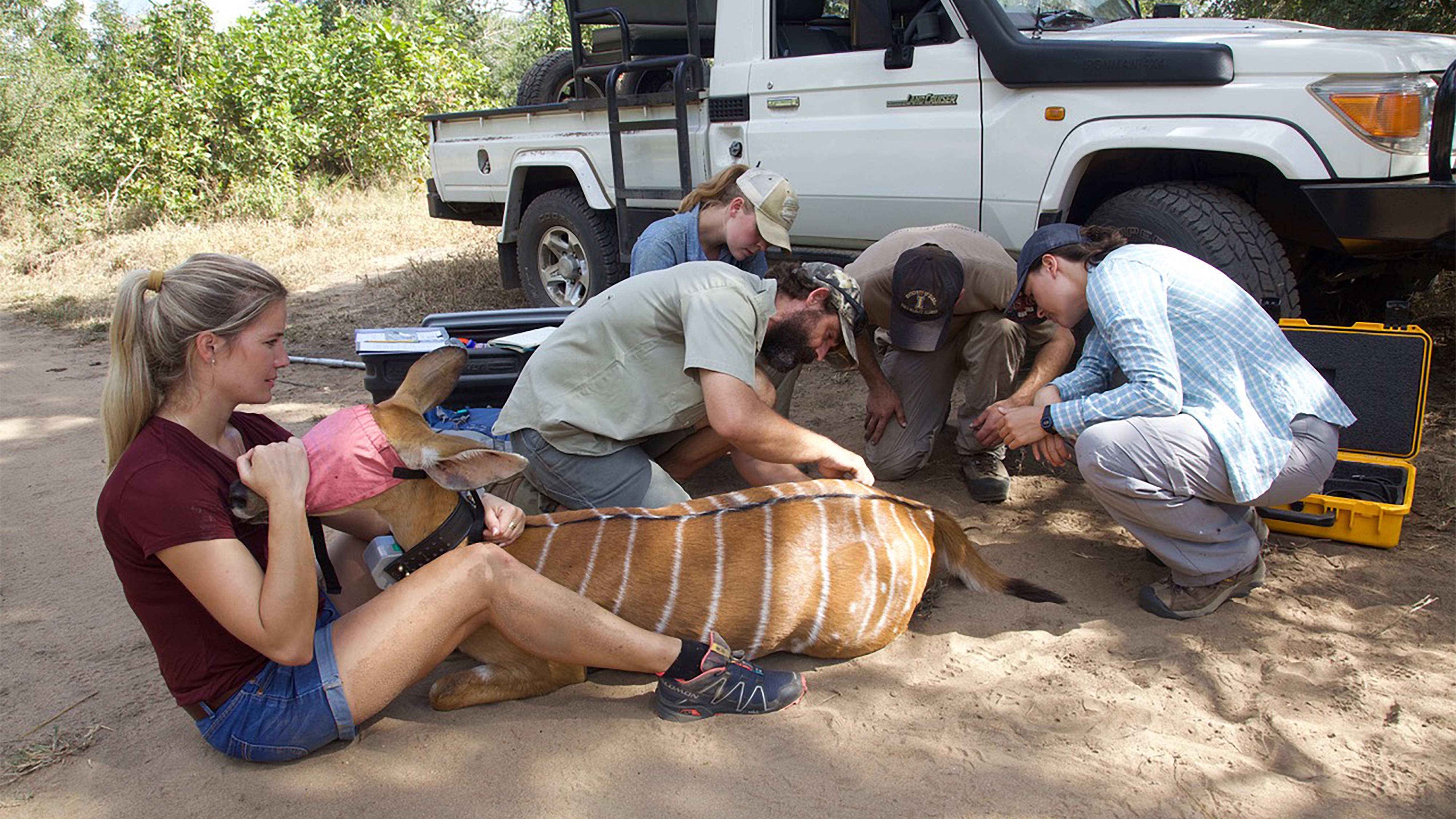
Hallie Brown (center, in the baseball cap) records information on the health of a nyala antelope.
Brown, now a postdoctoral research associate in Pringle's lab, was a graduate student at the time with Ryan Long, an associate professor of wildlife sciences at the University of Idaho and a former Princeton postdoc. Long and Pringle shared senior author credits on the new Nature paper.
"We watched the waters rise," Brown recalled. "We watched the animals' reactions in the hours, days, weeks after the cyclone: how some of them escaped the floodwaters, and some of them didn't. We used the data we had from before, during and after the storm to create, not just a description of this one event, but a broader set of expectations, so managers can better anticipate the effects of increasingly severe weather events."
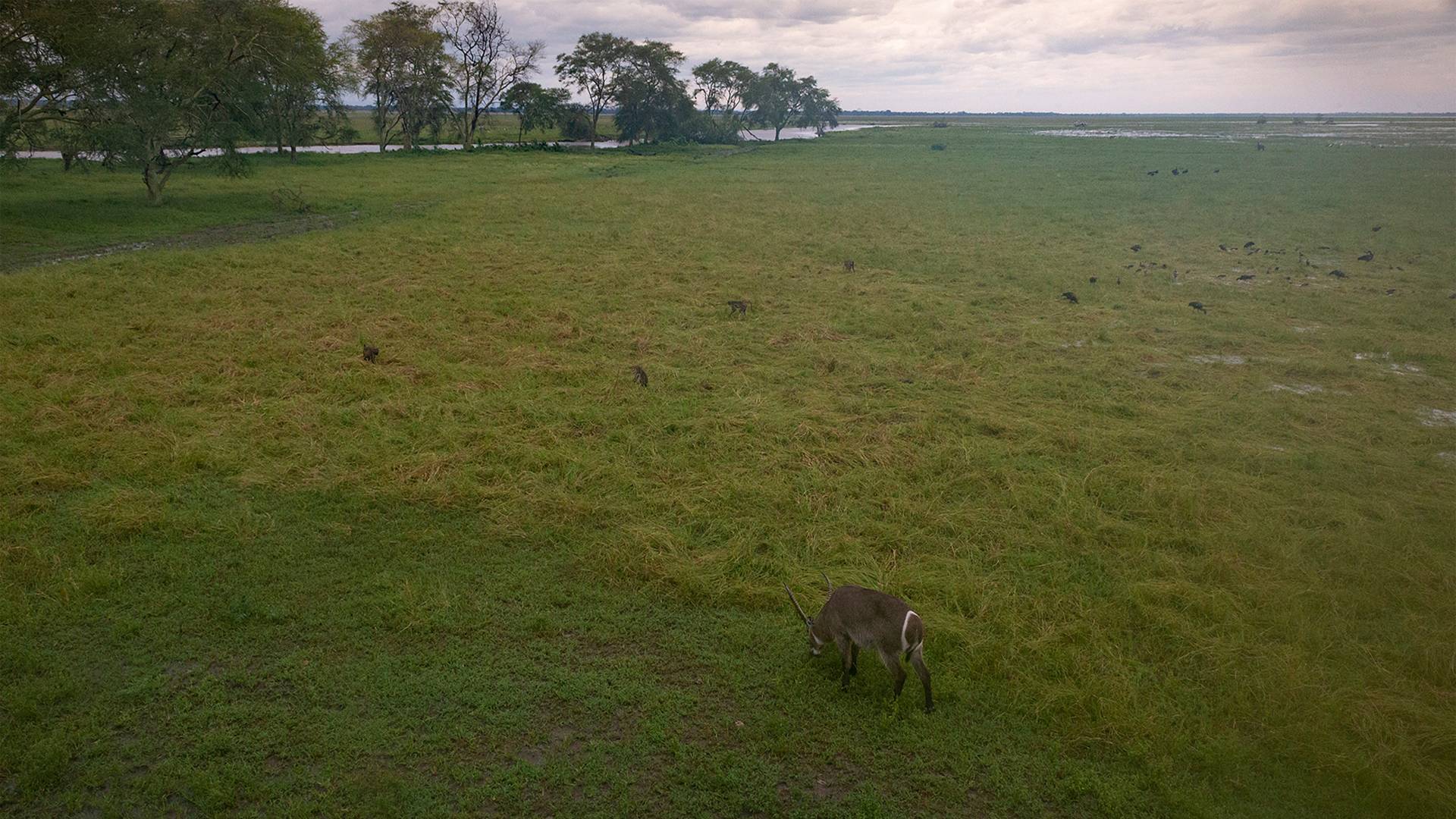
Cyclone Idai made landfall in Mozambique overnight March 14-15, 2019. The waters rose steadily over the next 48 hours. This photograph was taken 5:30 p.m. local time on March 15.
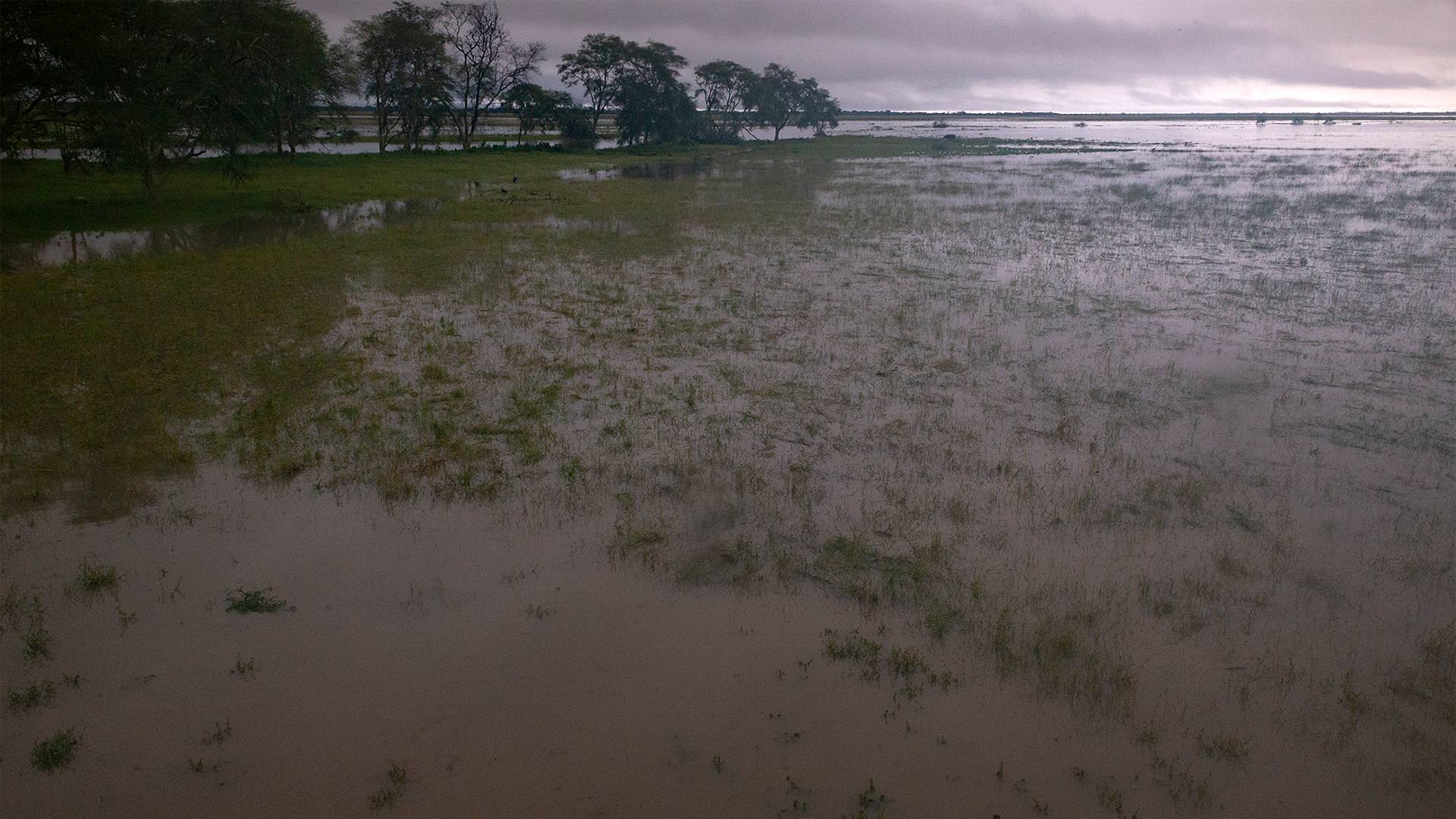
The same location, seen at 6 a.m. March 16.
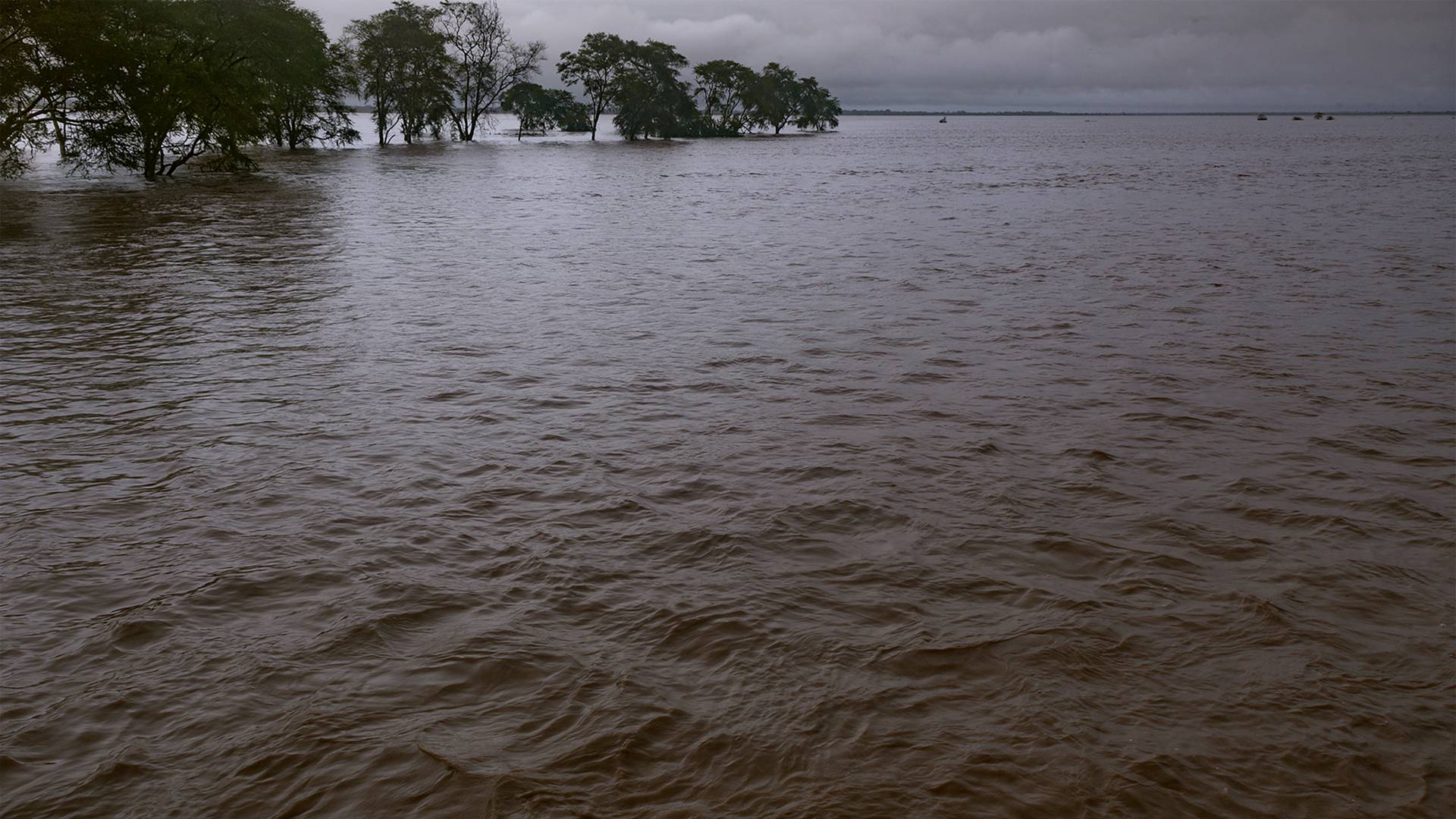
The same location, March 17. By then, floodwaters were so high that many small animals drowned and the survivors had been forced to higher ground. Warthogs and waterbucks, two animals that previously lived here in the floodplain, stayed in the highlands well into August.
The research team found that the best predictor of survival was size. The tiny oribi, about the size of a greyhound, saw its population plummet by 50%. About half of the slightly larger reedbucks died as well. The bushbucks, which are the smallest species that can wear a GPS collar, saw three of its eight collared animals die - the smallest male and the two smallest females - but only lost 4% of their population overall.
GPS data revealed that the bushbucks looked for hills to climb, including termite mound hillocks that reach up to 16 feet tall (5 meters) and 65 feet long (20 meters), which became islands in the flood. The researchers saw that one survivor hopscotched from mound to mound, passing quickly through the floodwaters in between, before finding safety in the woods at higher elevations. The four largest herbivores wearing GPS collars - nyala, kudu, sable and elephant - had no fatalities.
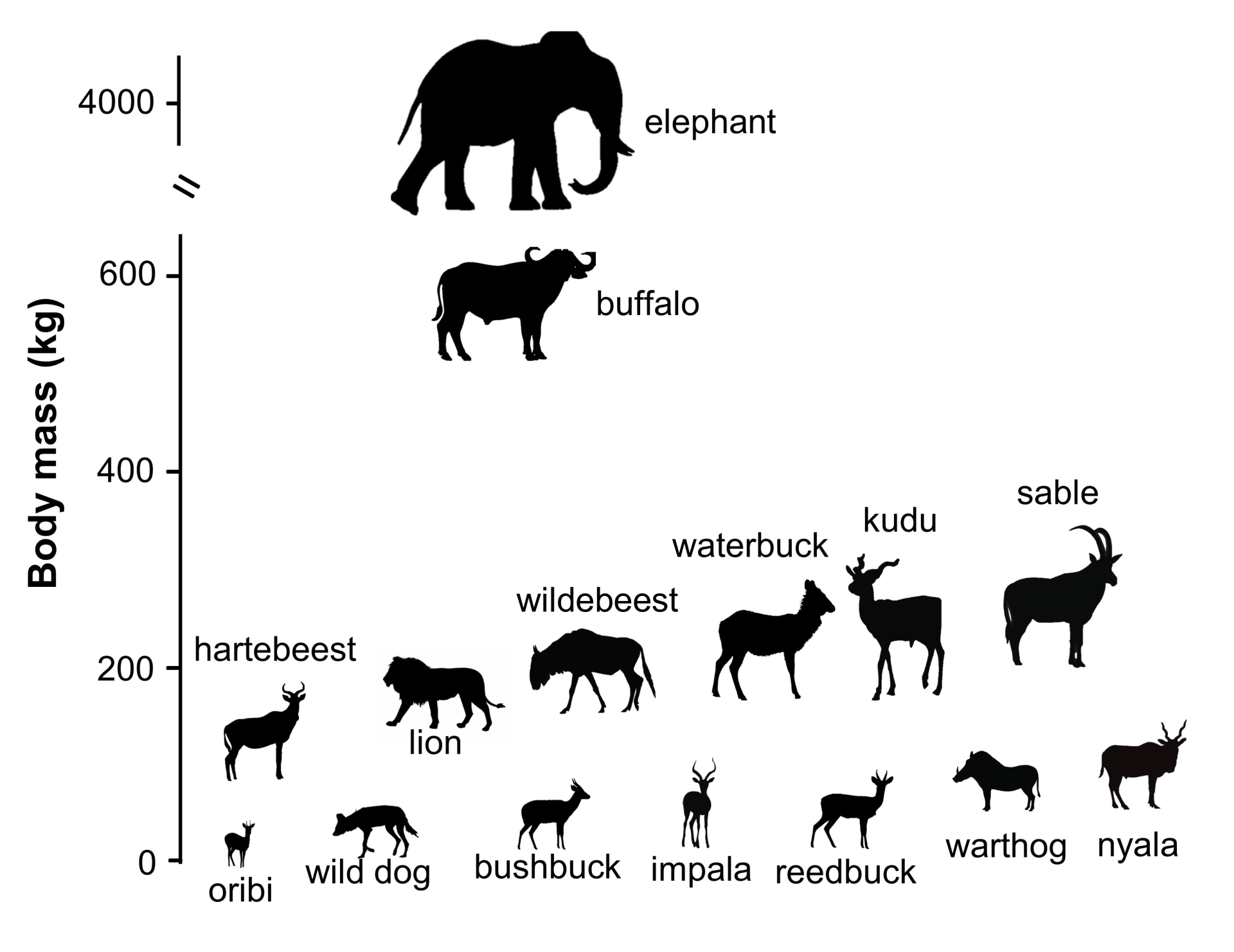
Body size also offered a secondary protection, the researchers found.
"Not only could the smaller-sized animals not outpace the waters, they were also not able to buffer the nutritional limitation afterwards," said Brown. "Because the flood was so high for so long, it killed a lot of the grasses and low-lying vegetation. Smaller animals can't withstand those nutritionally limited periods like larger animals, who have more fat to rely on."
The only previous study of hurricane effects on island populations looked at lizards and spiders in the Bahamas and found very similar patterns. "It's incredible how the patterns we found cross taxonomic and geographic lines," said Brown. "They seem to play out the same ways in our terrestrial ecosystem, with the largest mammals on earth, and with these tiny little invertebrates and reptiles in the Bahamas."
The researchers have two primary recommendations for other wildlife managers: evacuate the smallest and most ecologically vulnerable creatures to safer areas before storms come, and provide supplementary feed after the storm. Once all of the grasses have drowned, animals will turn to foraging on less-nutritious shrubs and bark, and many small creatures can't survive that dietary shift.
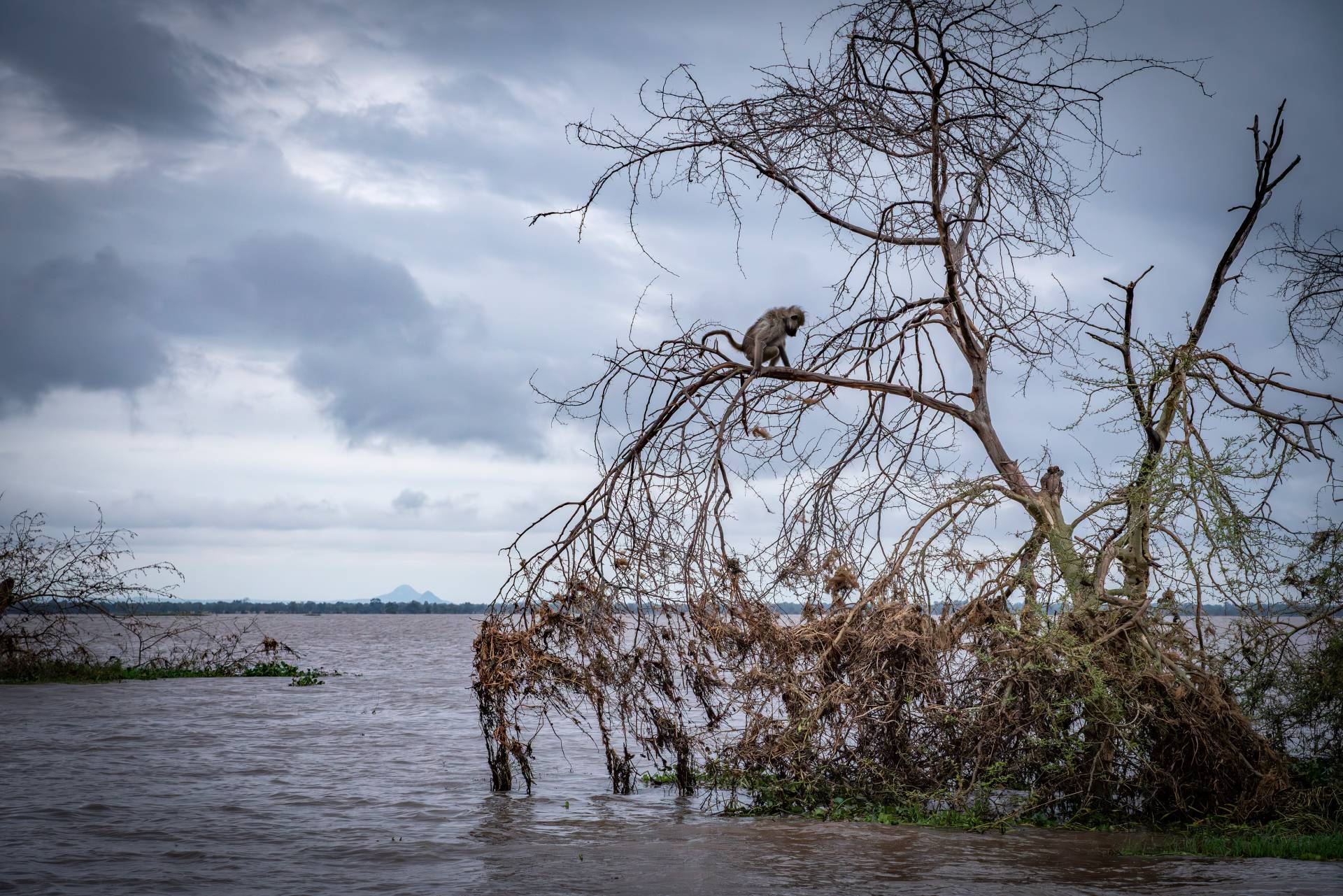
A very thin baboon was still stranded in a tree on the Gorongosa National Park floodplain almost a month after the cyclone. It seemed to have been surviving off of leaves stripped from this tree, an insufficient diet for the omnivorous primate.
The few carnivores in the park weathered the storm just fine, Brown said. The wild dogs and leopards benefited from having their prey animals concentrated in the upland areas, and the lions' primary food source - warthogs - stayed in the uplands for several months but were otherwise largely unaffected by the cyclone.
The research team included institutions from five countries: Princeton University; the University of Idaho-Moscow; the University of California-Merced; Montana State University-Bozeman;Yale University; Archbold Biological Station in Venus, Florida; the University of British Columbia-Vancouver; Gorongosa National Park; the University of Kent; the University of the Witwatersrand-Johannesburg; Associação Azul Moçambique in Maputo, Mozambique.
Other Princeton authors on the paper are then-graduate students Matt Hutchinson, Ph.D. 2021; Justine Atkins Becker, Ph.D. 2020; Arjun Potter, Ph.D. 2022; and then-NSF postdoctoral fellow Meredith Palmer.
"For me, the most exciting thing about this paper is the incredible collaboration between so many groups of researchers, from hydrology to large animal ecology, to create this really integrated piece of science," Brown said. "The best work happens in collaborative projects."
"Trait-based sensitivity of large mammals to a catastrophic tropical cyclone," by Reena H. Walker, Matthew C. Hutchinson, Justine A. Becker, Joshua H. Daskin, Kaitlyn M. Gaynor, Meredith S. Palmer, Dominique D. Gonçalves, Marc E. Stalmans, Jason Denlinger, Paola Bouley, Mercia Angela, Antonio Paulo, Arjun B. Potter, Nikhail Arumoogum, Francesca Parrini, Jason P. Marshal, Robert M. Pringle and Ryan A. Long, was published in Nature on Nov. 15 (DOI: 10.1038/s41586-023-06722-0). The research was supported by the U.S. National Science Foundation (IOS-1656527, DEB-2225088, IOS-1656642 and PRFB-1810586); the National Research Foundation of South Africa (116304); the Greg Carr and Cameron Schrier Foundations;; the Howard Hughes Medical Initiative BioInteractive; the Yale Institute for Biospheric Studies; the Grand Challenges Program of the High Meadows Environmental Institute at Princeton University; and the National Geographic Society (000039685).
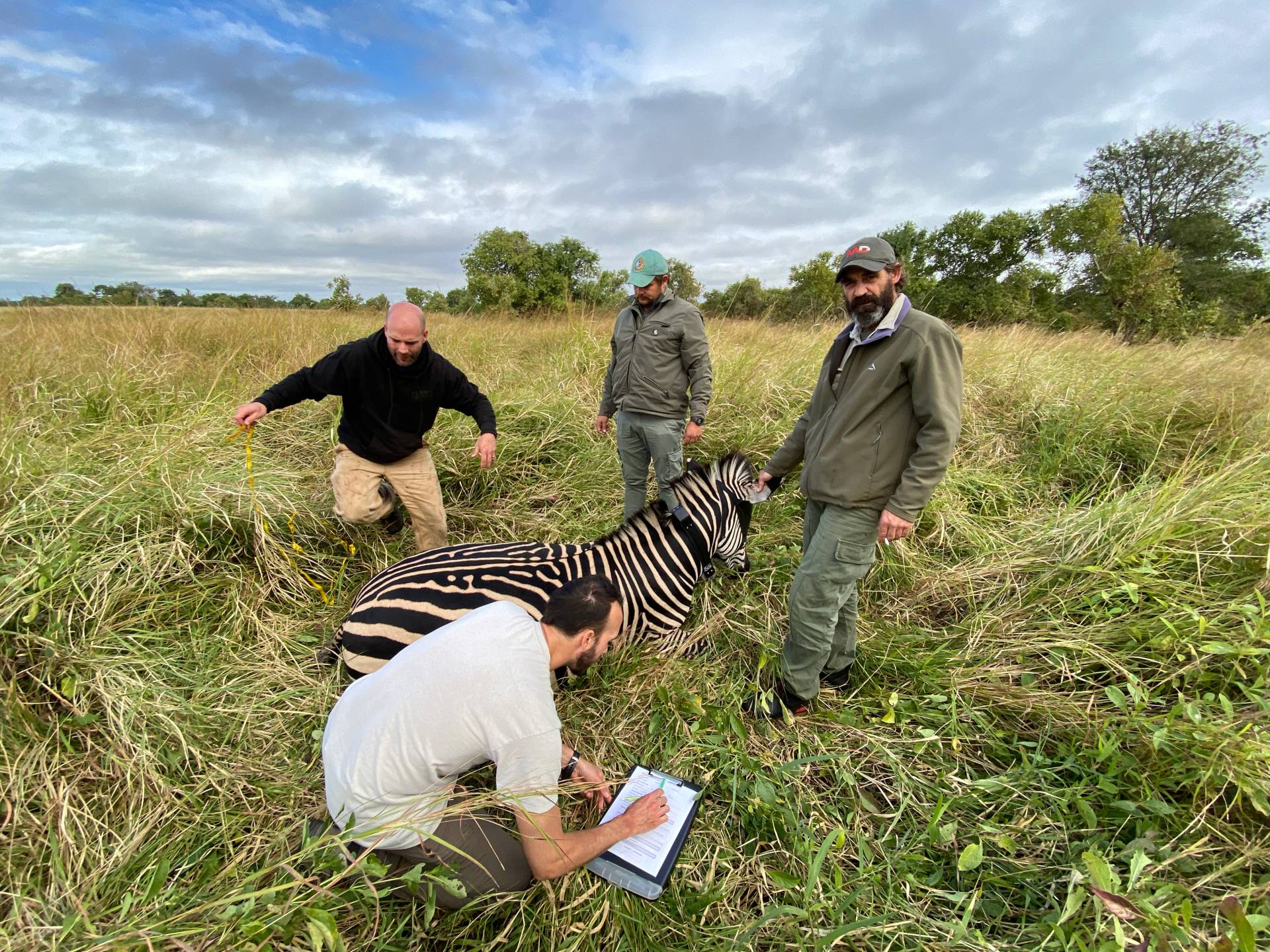
Researchers monitor the health of a GPS-collared zebra. From left: Jeremy Van Driessche, a Ph.D. student at the University of Idaho (writing down data); Ryan Long (black sweatshirt), a former Princeton postdoctoral fellow who is now a professor at the University of Idaho, measuring the zebra; Harry Hensburg (green hat), wildlife helicopter pilot; and Louis van Wyk, a game-capture specialist.






